Glastonbury, England in Somerset about 120 miles from London, has a long history – a mixture of legends, sacred sites, mysteries and folklore. Today the mystique of the small town is stronger than ever, with visitors flocking in to feel the magic. It’s a magic that comes in many forms.
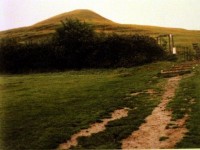 Several hills surround Glastonbury; the Tor is the highest. Paths wind up the grassy hill to a tower, all that’s left of a ruined medieval church. Some consider the terracing around the Tor to be a maze based on an ancient mystical pattern. A lake once surrounded the Tor, which some consider to be the mystical Isle of Avalon.
Several hills surround Glastonbury; the Tor is the highest. Paths wind up the grassy hill to a tower, all that’s left of a ruined medieval church. Some consider the terracing around the Tor to be a maze based on an ancient mystical pattern. A lake once surrounded the Tor, which some consider to be the mystical Isle of Avalon.
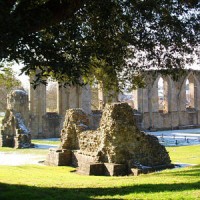 According to legend, King Arthur and his queen Guinevere are buried in the grounds of Glastonbury Abbey. The ruins of the great abbey, which was largely destroyed in the 16th century, remain today, along with tales that may even be true. They’re bound up with Holy Grail lore. It’s said that Joseph of Arimathea brought the cup used at Jesus’ Last Supper to the Isle of Avalon and buried it near the Tor.
According to legend, King Arthur and his queen Guinevere are buried in the grounds of Glastonbury Abbey. The ruins of the great abbey, which was largely destroyed in the 16th century, remain today, along with tales that may even be true. They’re bound up with Holy Grail lore. It’s said that Joseph of Arimathea brought the cup used at Jesus’ Last Supper to the Isle of Avalon and buried it near the Tor.
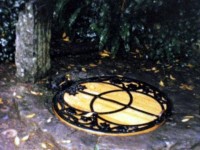 Where the cup was buried, it was said that a spring began to flow in a place now called the Chalice Well. The garden where the stream flows is indeed enchanting, and it’s not hard to believe that the waters bring eternal youth, as the tale claims. Many years later, they say, King Arthur and his knights came here in search of the Holy Grail.
Where the cup was buried, it was said that a spring began to flow in a place now called the Chalice Well. The garden where the stream flows is indeed enchanting, and it’s not hard to believe that the waters bring eternal youth, as the tale claims. Many years later, they say, King Arthur and his knights came here in search of the Holy Grail.
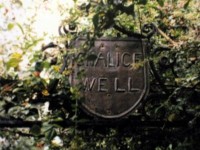 Not surprisingly, there’s a host of shops in Glastonbury selling artifacts and books associated with old myths, King Arthur, ley lines, sacred geometry, and spiritual healing. A related attraction is the Museum of Pagan Heritage. More prosaic is the Somerset Rural Life Museum, showing a history of local country life.
Not surprisingly, there’s a host of shops in Glastonbury selling artifacts and books associated with old myths, King Arthur, ley lines, sacred geometry, and spiritual healing. A related attraction is the Museum of Pagan Heritage. More prosaic is the Somerset Rural Life Museum, showing a history of local country life.
 If King Arthur’s knights came looking for the Grail today, they might be distracted by Pilton, a short distance from Glastonbury. Here is quite a different magic, the Glastonbury Festival of Contemporary Performing Arts (known as “Glasto”). It’s the largest music and performing arts festival in the world. It is most famous for contemporary music, but there’s much more: dance, theatre, jugglers, comedy, circus acts. The first Glasto was held in 1970, with an audience of 1500. It now draws about 177,000 to see and hear 700 acts played on 80 stages.
If King Arthur’s knights came looking for the Grail today, they might be distracted by Pilton, a short distance from Glastonbury. Here is quite a different magic, the Glastonbury Festival of Contemporary Performing Arts (known as “Glasto”). It’s the largest music and performing arts festival in the world. It is most famous for contemporary music, but there’s much more: dance, theatre, jugglers, comedy, circus acts. The first Glasto was held in 1970, with an audience of 1500. It now draws about 177,000 to see and hear 700 acts played on 80 stages.
The festival is held near the end of June, and tickets sell out soon after they are available. In 2009 the lead acts are Bruce Springsteen, Blur and Neil Young. A dazzling array of musicians is scheduled every year.
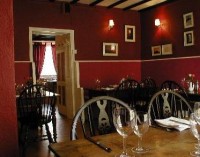 There’s no shortage of lodging for the area’s many tourists. Some 40 bed-and-breakfasts are scattered around Glastonbury, along with a few hotels. Hawthorns Hotel, in the heart of town, is a favorite, with 7 pleasant rooms and a restaurant serving good Indian food. It’s renowned for its lunchtime curry buffets.
There’s no shortage of lodging for the area’s many tourists. Some 40 bed-and-breakfasts are scattered around Glastonbury, along with a few hotels. Hawthorns Hotel, in the heart of town, is a favorite, with 7 pleasant rooms and a restaurant serving good Indian food. It’s renowned for its lunchtime curry buffets.
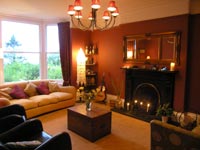 Two excellent bed-and-breakfast choices are Parsnips B&B and Hillside B&B. Parsnips adjoins the Abbey ruins and offers friendly hospitality, spotless rooms, and a good breakfast. Hillside has comfortable lodging in 3 bedrooms and an annex by the Tor. The hospitable hosts provide tips on walks and restaurants. Hillside B&B also has self-catering Primrose Cottage across the road, with 2 bedrooms and a lovely garden.
Two excellent bed-and-breakfast choices are Parsnips B&B and Hillside B&B. Parsnips adjoins the Abbey ruins and offers friendly hospitality, spotless rooms, and a good breakfast. Hillside has comfortable lodging in 3 bedrooms and an annex by the Tor. The hospitable hosts provide tips on walks and restaurants. Hillside B&B also has self-catering Primrose Cottage across the road, with 2 bedrooms and a lovely garden.
For the full British experience, stop in at Abbey Tea Room for traditional Somerset cream teas with scones. The tea room also serves light meals. The Cafe Galatea serves fine vegetarian food, while the Saffron is one of the best for Indian dishes. Rainbow’s End is another popular lunch spot. Of course Glastonbury has several inviting pubs; it wouldn’t be a proper English town without them.
Glastonbury isn’t particularly easy to get to from London, unless you have a car. (I took the train from Paddington Station to Castle Cary, then a taxi for the remaining 16 miles.) Bus service is available. A late-afternoon National Express coach goes from Heathrow airport through the lovely Somerset countryside to Glastonbury.


Comments